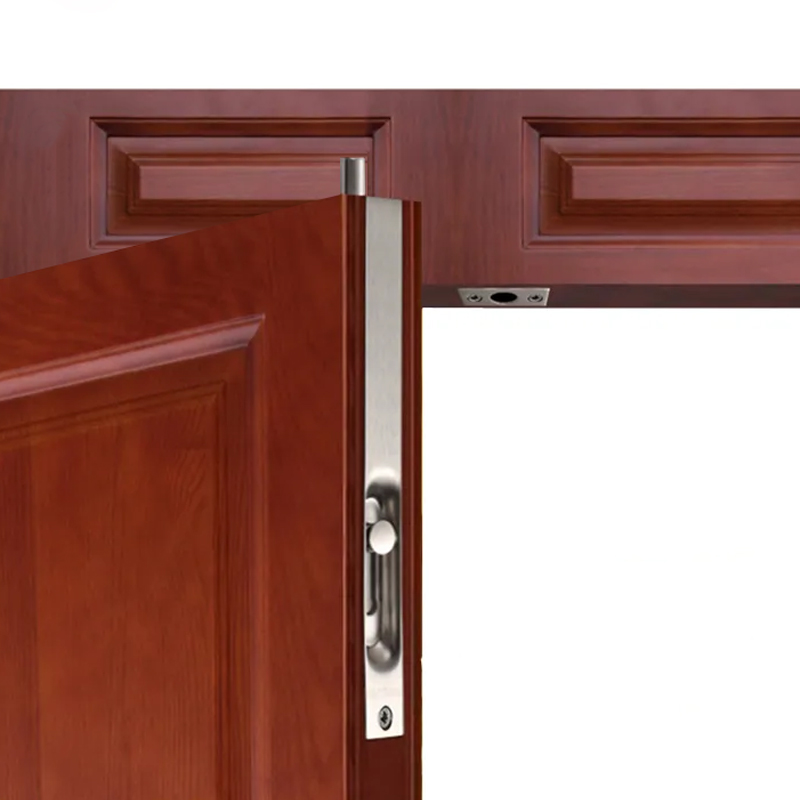
The Difference Between SS201, 304, 316 | Door Hardware
The Difference Between SS201, 304, 316 | Door Hardware
Stainless steel has become a common and important material, widely used in construction, manufacturing, and daily life. There are many types of stainless steel, including common models such as 201, 304 and 316. However, for people who don't understand the properties of the material, it's easy to get caught up in the differences between these models. This article will detail the differences between stainless steel 201, 304 and 316, help to better understand the different types of stainless steel materials, and provide some suggestions for choosing stainless steel.
1. Chemical composition
The chemical composition of stainless steel is an important factor in determining its properties and characteristics. Stainless steel 201, 304 and 316 have significant differences in chemical composition. Stainless steel 201 contains 17.5%-19.5% chromium, 3.5%-5.5% nickel, and 0.1%-0.5% nitrogen, but no molybdenum. Stainless steel 304 contains 18%-20% chromium, 8%-10.5% nickel, and does not contain nitrogen and molybdenum. In comparison, stainless steel 316 contains 16%-18% chromium, 10%-14% nickel, and 2%-3% molybdenum. From the perspective of chemical composition, stainless steel 316 has higher corrosion resistance and acid resistance, and is more suitable for use in some special environments than stainless steel 201 and 304.
2. Corrosion resistance
Corrosion resistance is an important performance indicator of stainless steel. Stainless steel 201 has good corrosion resistance to most organic acids, inorganic acids and salt solutions at room temperature, but will be corroded in a strong alkaline environment. Stainless steel 304 has good corrosion resistance and is suitable for most general corrosive environments. Stainless steel 316 has excellent corrosion resistance, especially in acidic environments and high temperature conditions, and is often used in chemical, marine and other applications. Therefore, when choosing stainless steel materials, it is important to choose the right model according to the specific use environment.
3. Mechanical properties
The mechanical properties of stainless steel include indicators such as strength, ductility, and hardness. In general, the strength of stainless steel 201 is slightly higher than that of stainless steel 304, but much lower than that of stainless steel 316. Stainless steel 201 and 304 have good ductility and are easy to process and form, and are suitable for some occasions with high requirements for material processing performance. Stainless steel 316 has high strength, but also has good wear resistance and tensile resistance, which is suitable for working environments that withstand high strength and high temperatures. Therefore, when choosing stainless steel materials, it is necessary to make a suitable choice according to the specific mechanical requirements and the use environment.
4. Price
There is also a certain difference in the price of stainless steel 201, 304 and 316. Generally speaking, the price of stainless steel 201 is relatively low and more economical. The price of stainless steel 304 is relatively high, but it is still one of the most common stainless steel models on the market due to its wide range of applications and good comprehensive performance. Stainless steel 316 is relatively expensive due to its good corrosion resistance and mechanical properties, and is suitable for some special fields with high requirements for material properties. Therefore, when purchasing stainless steel materials, it is necessary to comprehensively consider factors such as material performance and budget.
Stainless steel has become a common and important material, widely used in construction, manufacturing, and daily life. There are many types of stainless steel, including common models such as 201, 304 and 316. However, for people who don't understand the properties of the material, it's easy to get caught up in the differences between these models. This article will detail the differences between stainless steel 201, 304 and 316, help to better understand the different types of stainless steel materials, and provide some suggestions for choosing stainless steel.
1. Chemical composition
The chemical composition of stainless steel is an important factor in determining its properties and characteristics. Stainless steel 201, 304 and 316 have significant differences in chemical composition. Stainless steel 201 contains 17.5%-19.5% chromium, 3.5%-5.5% nickel, and 0.1%-0.5% nitrogen, but no molybdenum. Stainless steel 304 contains 18%-20% chromium, 8%-10.5% nickel, and does not contain nitrogen and molybdenum. In comparison, stainless steel 316 contains 16%-18% chromium, 10%-14% nickel, and 2%-3% molybdenum. From the perspective of chemical composition, stainless steel 316 has higher corrosion resistance and acid resistance, and is more suitable for use in some special environments than stainless steel 201 and 304.
2. Corrosion resistance
Corrosion resistance is an important performance indicator of stainless steel. Stainless steel 201 has good corrosion resistance to most organic acids, inorganic acids and salt solutions at room temperature, but will be corroded in a strong alkaline environment. Stainless steel 304 has good corrosion resistance and is suitable for most general corrosive environments. Stainless steel 316 has excellent corrosion resistance, especially in acidic environments and high temperature conditions, and is often used in chemical, marine and other applications. Therefore, when choosing stainless steel materials, it is important to choose the right model according to the specific use environment.
3. Mechanical properties
The mechanical properties of stainless steel include indicators such as strength, ductility, and hardness. In general, the strength of stainless steel 201 is slightly higher than that of stainless steel 304, but much lower than that of stainless steel 316. Stainless steel 201 and 304 have good ductility and are easy to process and form, and are suitable for some occasions with high requirements for material processing performance. Stainless steel 316 has high strength, but also has good wear resistance and tensile resistance, which is suitable for working environments that withstand high strength and high temperatures. Therefore, when choosing stainless steel materials, it is necessary to make a suitable choice according to the specific mechanical requirements and the use environment.
4. Price
There is also a certain difference in the price of stainless steel 201, 304 and 316. Generally speaking, the price of stainless steel 201 is relatively low and more economical. The price of stainless steel 304 is relatively high, but it is still one of the most common stainless steel models on the market due to its wide range of applications and good comprehensive performance. Stainless steel 316 is relatively expensive due to its good corrosion resistance and mechanical properties, and is suitable for some special fields with high requirements for material properties. Therefore, when purchasing stainless steel materials, it is necessary to comprehensively consider factors such as material performance and budget.




.jpg?imageView2/1/w/80/h/70)



Leave a comment